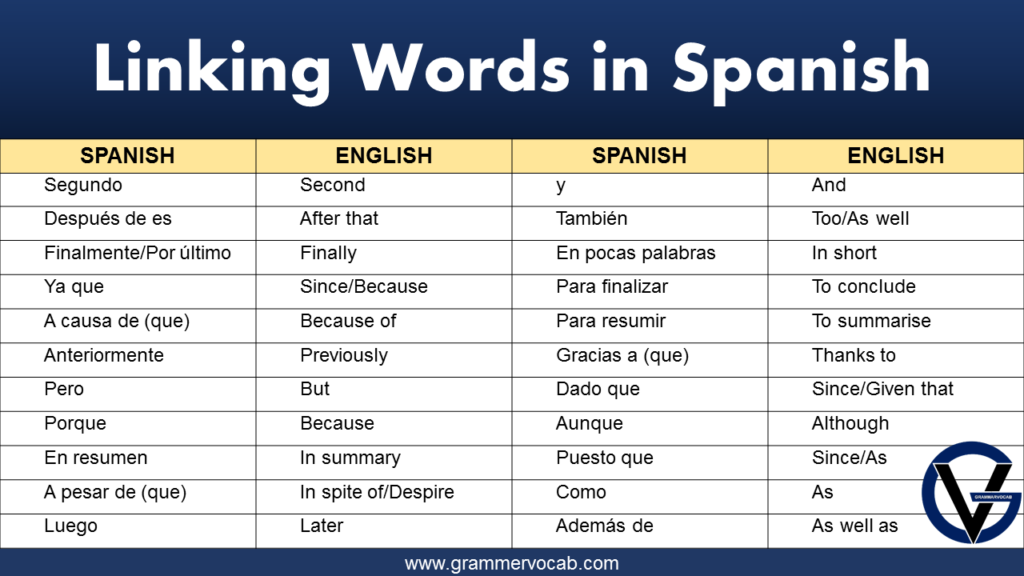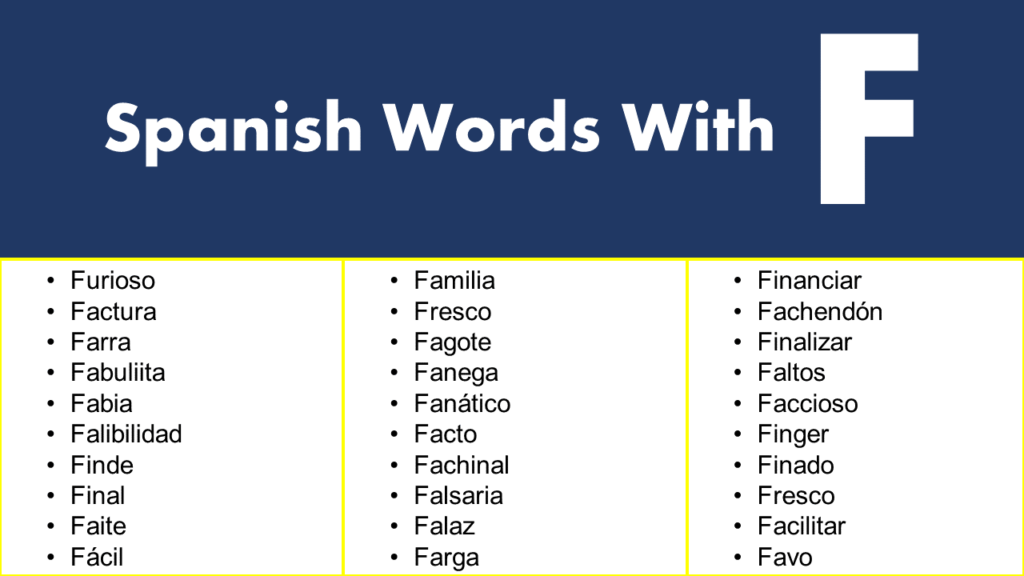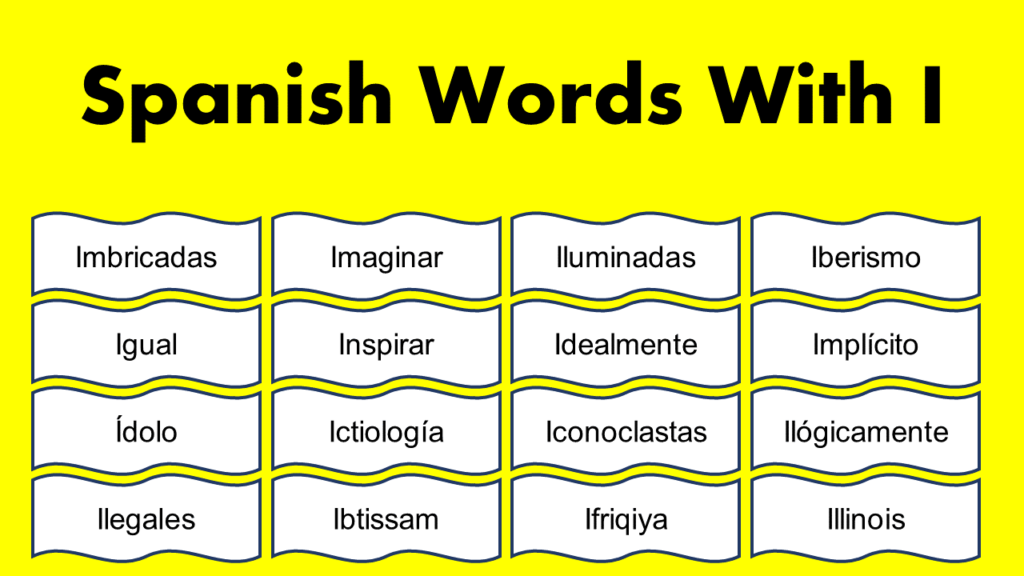Are you struggling to make your Spanish writing flow smoothly and sound naturally? One effective way to enhance the organization of your sentences is by using linking words. Linking words, also known as transitional or connective words, play a crucial role in connecting ideas, establishing relationships between sentences and paragraphs, and guiding the reader through your text. In this blog post, we will explore the importance of linking words in Spanish and provide you with a comprehensive list of commonly used linking words that will elevate the quality of your Spanish writing to a whole new level.
What are the rules for linking words?
Linking words, also known as transition words or connectors, are used to connect ideas within a sentence, between sentences, or between paragraphs. Here are some general rules to follow when using linking words:
- Use linking words appropriately: It’s important to use linking words that appropriately connect the ideas being expressed. Using too many or too few linking words can disrupt the flow of your writing and confuse the reader.
- Use the correct type of linking word: There are different types of linking words, such as conjunctions (and, but, or), adverbs (however, therefore, moreover), and prepositions (in addition to, despite). It’s important to use the appropriate type of linking word for the context and purpose of your writing.
- Use linking words consistently: When using linking words, it’s important to use them consistently throughout your writing. This helps to maintain a clear and cohesive structure and allows the reader to follow your train of thought.
- Vary your use of linking words: While it’s important to use linking words consistently, it’s also important to vary your use of them. Using the same linking word repeatedly can become monotonous, so it’s important to use different linking words to keep your writing interesting and engaging.
- Place linking words in the correct position: Linking words should be placed in the correct position in a sentence or paragraph. For example, a linking word such as “however” is usually placed at the beginning of a sentence to indicate a contrast with the preceding idea.
- Use punctuation correctly: When using linking words, it’s important to use the correct punctuation to indicate the relationship between ideas. For example, a semicolon can be used to connect two closely related ideas, while a comma can be used to connect two less closely related ideas.
By following these rules, you can effectively use linking words to connect ideas and create a well-structured and cohesive piece of writing.
Linking Words Example Sentences
Here are some example sentences in Spanish with linking words in quotes:
- Por consiguiente (Consequently, Therefore):
El coche se averió, por consiguiente, llegamos tarde a la reunión. (The car broke down; consequently, we arrived late to the meeting.)
- Sin embargo (However, Nevertheless):
La comida estaba deliciosa, sin embargo, el servicio fue muy lento. (The food was delicious; however, the service was very slow.)
- Por otro lado (On the other hand):
Me gustaría ir al cine, pero por otro lado, también tengo mucho trabajo. (I would like to go to the movies, but on the other hand, I have a lot of work.)
- Además (Moreover, Furthermore):
Me gusta viajar, además me gusta aprender sobre nuevas culturas. (I like to travel, moreover, I enjoy learning about new cultures.)
- En resumen (In summary):
Hicimos muchas actividades durante nuestras vacaciones. En resumen, lo pasamos muy bien. (We did a lot of activities during our vacation. In summary, we had a great time.)
- Asimismo (Likewise, Also):
Mi hermana está estudiando medicina, y yo asimismo quiero estudiar esa carrera. (My sister is studying medicine, and I also want to study that career.)
- En cambio (On the other hand):
No me gusta el fútbol, en cambio, prefiero el baloncesto. (I don’t like soccer; on the other hand, I prefer basketball.)
- Por lo tanto (Therefore, Thus):
Estudié mucho para el examen, por lo tanto, saqué una buena nota. (I studied a lot for the exam; therefore, I got a good grade.)
- A pesar de (In spite of, Despite):
A pesar del mal tiempo, salimos a pasear por el parque. (In spite of the bad weather, we went for a walk in the park.)
- Mientras tanto (Meanwhile):
No puedo ir contigo ahora, pero puedes empezar sin mí. Mientras tanto, te alcanzaré más tarde. (I can’t go with you now, but you can start without me. Meanwhile, I’ll catch up with you later.)
Common Linking Words in Spanish
Here is a list of some common linking words:
Addition
Linking words used to indicate addition include:
- “por otra parte” (on the other hand)
- “y” (and)
- “igualmente” (equally)
- “además” (besides)
- “también” (also)
- “asimismo” (likewise)
- “por añadidura” (additionally)
These words connect similar or related ideas, emphasizing that one idea complements the other.
Contrast
Linking words used to show contrast include:
- “aunque” (although)
- “a pesar de” (despite)
- “pero” (but)
- “sin embargo” (however)
- “no obstante” (nevertheless)
- “por el contrario” (on the contrary)
These words highlight differences or opposing ideas between two clauses or sentences.
Cause and Effect
Linking words used to indicate cause and effect relationships include:
- “por eso” (that’s why)
- “por consiguiente” (consequently)
- “entonces” (then)
- “debido a” (due to)
- “porque” (because)
- “ya que” (since)
- “así que” (so)
These words show the reason or result of a particular action or situation.
Time
Linking words used to express time relationships include:
- “mientras” (while)
- “por último” (finally)
- “al mismo tiempo” (at the same time)
- “entonces” (then)
- “después” (after)
- “antes” (before)
- “luego” (later)
These words help indicate the sequence or timing of events or actions.
Condition
Linking words used to express conditions include:
- “a condición de que” (provided that)
- “con tal de que” (as long as)
- “a no ser que” (unless)
- “a menos que” (unless)
- “si” (if)
- “en caso de que” (in case)
These words establish a condition or requirement for something to happen.
Conclusion
Linking words used to conclude or summarize include:
- “por último” (finally)
- “en fin” (in short)
- “en definitiva” (definitely)
- “para concluir” (to conclude)
- “en conclusión” (in conclusion)
- “en resumen” (in summary)
These words help wrap up an argument or provide a concise summary of the main points.
List Of Linking Words in Spanish
| Spanish | English |
| Segundo | Second |
| Después de es | After that |
| Finalmente/Por último | Finally |
| Ya que | Since/Because |
| A causa de (que) | Because of |
| Anteriormente | Previously |
| Pero | But |
| Porque | Because |
| En resumen | In summary |
| A pesar de (que) | In spite of/Despire |
| Luego | Later |
| y | And |
| También | Too/As well |
| En pocas palabras | In short |
| Para finalizar | To conclude |
| Para resumir | To summarise |
| Gracias a (que) | Thanks to |
| Dado que | Since/Given that |
| Aunque | Although |
| Puesto que | Since/As |
| Como | As |
| Además de | As well as |
| Por culpa (de) | Because of |
| Por un lado/una parte | On the one hand |
| Entonces | Then |
| En conclusión | In conclusion |
| O sea | In other words |
| Al final | In the end |
| No obstante | Nevertheless |
| Debido a (que) | Due to/Because of |
| En definitiva | In brief |
| Por lo tanto/Por eso | Therefore |
| Tercero | Third |
| Posteriormente | Subsequently |
| Por otro lado/otra parte | On the other hand |
| Sin embargo | However |
| Por esta razón | For this reason |
| Así que | So |



